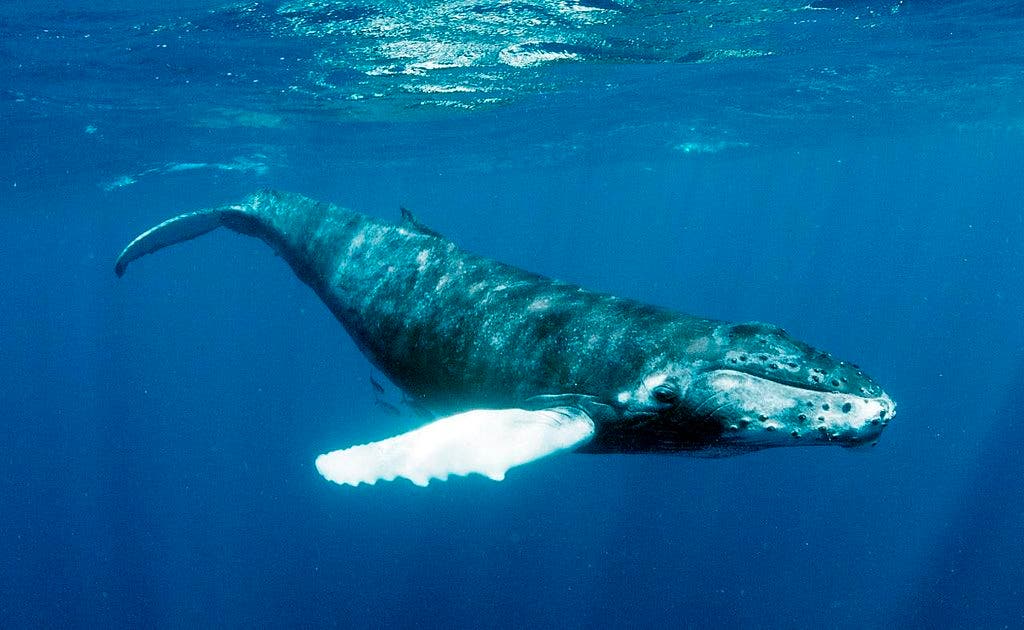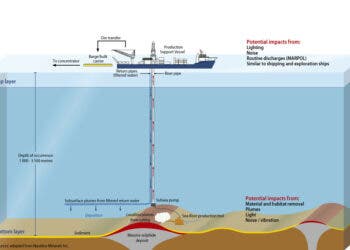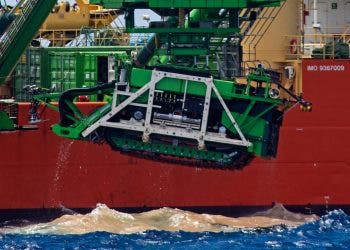Scientists have found yet another reason why companies and governments shouldn’t mine the seabed — an area rich in mineral resources, from manganese to cobalt, but also important from a biodiversity standpoint, and very vulnerable to human intervention. Noise pollution from the activity could expand through the ocean for hundreds of kilometres, creating a “cylinder of sound” from the surface to the sea bed that could affect oceanic creatures.

Researchers from the University of Hawaii, Oceans Initiative, Curtin University and the National Institute of Advanced Industrial Science and Technology found that noise from a single mine in the deep sea could travel 500 kilometres (over 300 miles) in gentle weather conditions — with cumulative impacts adding up from multiple mines.
There are currently seventeen companies exploring the possibility of mining in the Clarion-Clipperton Zone (CCZ), an area that covers 4.5 million square kilometres (1.7 million square miles) between Mexico and Hawaii. The area has many mineral-rich lumps known as polymetallic nodules, which would be scooped by gigantic machines.
If each company launches just one mine, an area of 5.5 million square kilometres (2.1 million square miles) would have elevated noise levels, the researchers estimated. This could have untold impacts on noise-sensitive species, such as whales, and undermine efforts to preserve areas with no mining impact to use for scientific comparisons.
“What surprised me most was how easy it would be for noise from just one or two mines to impact nearby areas that have been set aside as experimental controls,” Rob Williams, co-founder of Oceans Initiative, said in a statement. “With so many unknowns, we need a careful comparison of these preservation reference areas to sites where mining is taking place.”
The challenges of noise pollution
While mining companies are already testing smaller-scale prototypes of deep-sea mining systems, they have yet to share their data on underwater noise pollution. This means the researchers had to use noise levels from other better-studied industrial activities, such as coastal dredges and oil and gas industry ships, as placeholders.
Andrew Friedman, project director of Pew’s seabed mining project, said true noise levels from deep-sea mining will likely be different once the real data is available, but they are more likely to be higher than the proxy data. This is because the seabed mining equipment is much larger and more powerful than the proxies used for the study. So this is a conservative estimate that’s likely going to be much worse in the real life if deep-sea mining gets the green light.
But even this conservative estimate is concerning. The researchers found that noise levels in a radius of four to six kilometres from each mine could exceed thresholds set by the US National Marine Fisheries Service, above which there are risks of impacts on marine mammals. Marine mammal species, which are known to be sensitive to noise, can be throughout the Clarion-Clipperton Zone.
This includes endangered migratory baleen whales (Mysticeti) and deep-diving toothed whales (Odontoceti), for example, but the list goes on for far longer. Deep-sea species, of which we don’t know much about, are believed to use sound and vibrations to communicate, navigate and detect predators in the absence of sunlight. The noise would likely disrupt their ecosystems, the researchers said, in ways we don’t even understand yet.
Which is why so many are adamant that deep-sea mining shouldn’t even start before we can understand the environmental risks associated with it.
The island nation of Nauru invoked a UN rule in 2019 that could force the International Seabed Authority, the organization that regulates mining in areas beyond national jurisdiction, to complete regulations that would enable mining by 2023. The move came despite concerns of scientists and NGOs, who argue the science around deep-sea mining is still inadequate.
“The deep-sea houses potentially millions of species that have yet to be identified, and processes there allow life on Earth to exist,” Travis Washburn, a study author, said in a statement. “With careful study and management, we have a unique opportunity to understand and mitigate human impacts to the environment before they occur.”
For now, there’s much about deep-sea mining we don’t understand, and the calls of environmentalists are bound to clash with those of the would-be miners. What type of outcome will that lead to? Yet again, we’re not sure yet.
The study was published in the journal Science.





